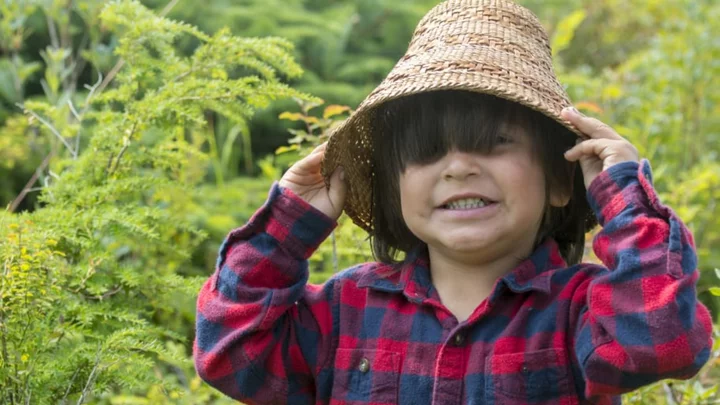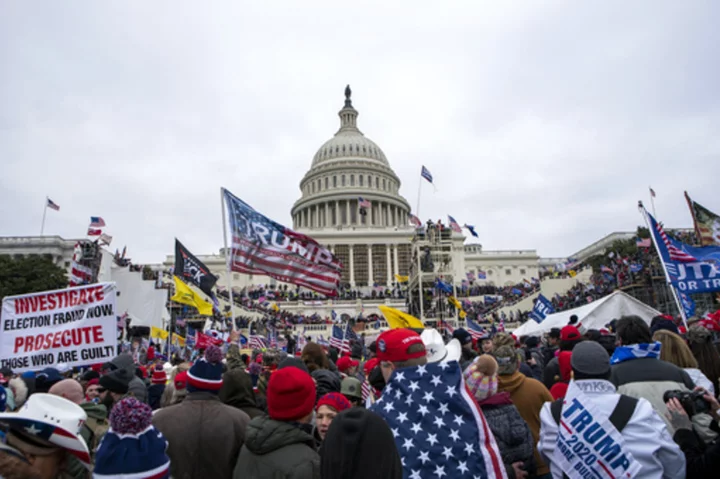For more than a century, Native American Heritage Month has evolved from a day to honor Indigenous rights to a monthlong celebration of cultures and history. The origins of the month began in the early 20th century with Dr. Arthur Caswell Parker, who called on Americans to reflect on Native American experiences. Today, the commemoration takes modern forms, from acknowledging the forced displacements of Native people to decolonizing Thanksgiving dinner. Here’s what to know.
1. Today, nearly 4 million Americans identify exclusively as American Indian or Alaska Native.
According to the 2020 U.S. Census, 3.7 million American identify as only American Indian or Alaska Native, the category terms listed on Census forms. The Census Bureau projects that the American Indian and Alaska Native population (alone or combined with other racial groups) will top 10.1 million by 2060.
As of 2022, there are 324 American Indian reservations and 574 federally recognized tribes in the United States that have survived centuries of genocide and displacement to form the vibrant communities they are today. States with the highest proportions of Native residents include Alaska, Oklahoma, Arizona, New Mexico, and South Dakota.
2. A Native American heritage commemoration was proposed in the early 20th century.
One of the earliest advocates for Native American rights was Arthur Caswell Parker, a Seneca archaeologist, historian, and director of the Rochester Museum of Arts and Sciences in New York. He co-founded the Society of American Indians in 1911, which advocated for Native Americans to be granted U.S. citizenship. Parker also successfully pushed the Boy Scouts to hold a “First Americans Day” from 1912 to 1915.
Building on this progress, Red Fox Skiukusha (also known as Red Fox James), a Blackfeet Nation member, rode 4000 miles from Montana to Washington, D.C., to petition for an “Indian Day” in 1914. He spent the next year traveling to gather governors’ signatures in support of citizenship for Native Americans and a national day of acknowledgement. U.S.-born Native Americans were granted citizenship in 1924.
3. Individual states enacted their own Native American heritage celebrations.
From the early 1900s to the 1990s, official celebrations of Native American heritage went from being one day, to one week, to one-month affairs. Several states enacted individual celebrations in September to commemorate Native American history until the movement gained national prominence in the 1970s.
In 1976, Congress passed Senate Joint Resolution 209 to allow President Gerald R. Ford to declare October 10 through October 16 as “Native American Awareness Week.” President Ronald Reagan declared May 13, 1983 “American Indian Day,” followed by “Native American Week” from November 23 to November 30 in 1986, which also acknowledged European colonizers’ genocide of Native Americans. The national week of celebration continued each year through 1989.
4. George H.W. Bush proclaimed November for Native American heritage celebrations in 1990.
The week was extended to a month when President George H.W. Bush declared November “National American Indian Heritage Month” in 1990. The name has changed throughout the years, and some have proposed including Alaska Natives and Native Hawaiians in the official designation. Since 1995, each president—from Bill Clinton to Joe Biden—has proclaimed November as a month to celebrate Native American cultures, languages, and history [PDF].
5. Each year, Native American Heritage Month has a distinct theme.
The U.S. Bureau of Indian Affairs sets the tone for each year’s celebration. Themes for the month have included “Celebrating Our Past, Creating Our Future” in 2002, “Pride in Our Heritage With Gratitude to Our Elders” in 2009, and “Serving Our People, Serving Our Nations: Honoring Those That Served Our Country” in 2012. The theme for 2023 is “Celebrating Tribal Sovereignty and Identity.”
6. There are plenty of ways to celebrate Native American Heritage Month.
Native American Heritage Month is celebrated differently across the country. Rock Your Mocs, launched in 2010, is an annual week-long event in which Native Americans honor their cultures by wearing moccasins or a turquoise ribbon to work or school. Others wear red on Red Shawl Day to bring attention to missing and murdered Indigenous women. Some people attend the National Day of Mourning (on Novermber 23 this year) online or in person in Plymouth, Massachusetts, site of the English settlers’ arrival in 1620. These events spread awareness through hashtags and content on social media.
Native and non-Native individuals also celebrate Native American Heritage Month by visiting museums, attending performances or rallies, donating to Native-owned businesses and charities, and reading Native American authors. You can also learn about the original stewards of the land where you live and decolonize your Thanksgiving meal.
7. Native American Heritage Month is an opportunity to learn about Indigenous history.
Native American history is preserved in government archives, ancestral places, museums, and by the people today. The National Park Service manages sites of cultural significance, such as Alabama’s Russell Cave, featuring 10,000 years of human habitation; and the Trail of Tears National Historical Trail, which traces the migration of tribes forcibly removed from their Southeast U.S. homelands in 1838 and 1839. The Smithsonian’s National Museum of the American Indian locations in Washington, D.C., and New York City also preserve Indigenous crafts and lifeways.
This story originally ran in 2021; it has been updated for 2023.
This article was originally published on www.mentalfloss.com as 7 Things to Know About Native American Heritage Month.









